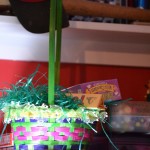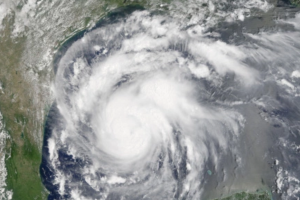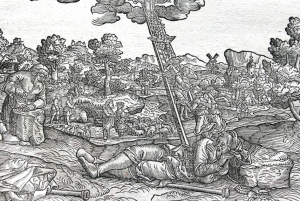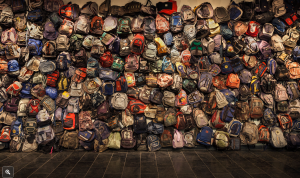The moaning woke me up. A deep moaning, somewhere between anguish and pain. I lay still on my back for a few moments of unknowing, staring at the ceiling above our bed, at the shoddy patch that ran from one wall to the other above our heads, a sloppily mended crack. Our first house: lavish with wood beams and chandeliers but with a dank basement, a leaky roof, ascetic electric wiring, and a thoroughly questionable neighborhood.
Why hadn’t I fixed that ceiling with a baby on the way, I wondered. And then, alert, I realized we weren’t having a baby. I jolted out of bed, headed to the bathroom, where Priscilla sat, bent over, somewhere between agony and ache. The doctor had said, “Don’t worry, honey, you’ll have another.” But she didn’t. Not then anyway. Not yet.
I shouldered her, half nudging, half carrying her down the stairs. I lifted her into the car, our ’68 Rambler, which was in no better shape than our house. And off we drove into the dark.
It was quiet. So quiet. Yet it wasn’t an eerie silence, as we drove down the Paseo, with its tired esplanades and worn brick buildings. It was, in some bizarre twist of emotion, sweet. We might have been driving to the North Carolina coast, the way we did early one morning during our graduate school days. We might have been driving through the South Carolina wetlands, the way we did early one morning on our honeymoon. We might have been driving from Aviemore or Inverewe, the way we did in the moonlight during a year of study in Scotland. Instead, we were driving to the hospital down a Kansas City boulevard that night, a sad shooting star in a spell of privacy, aloneness, and, strangely, sweetness, Priscilla’s golden hair draped over my shoulder.
We arrived at the hospital, its polished floors echoing the stillness of the night. Shuffled into in a side room, Priscilla lay on her side on a hospital bed. I plunked onto a plastic chair then climbed onto the bed, where my young wife lay. I faced her, my nose not two inches from hers, so close I could smell her breath—the scent of tears—and taste the sting of salt water as I kissed her lips. We waited together for hours, it seems, though I don’t really know. I do know that I’ve driven thousands of miles and slept countless nights in dozens of beds since then, some of them in hospitals—but that night I remember better than them all. I remember the moaning, the darkness, the stillness, the roughness of hospital sheets, the slant of the hospital bed, the lingering of her lips on mine.
I am dumbstruck, dope-slapped by the ambiguity of it all. The mixed-up jumble of existence we call life. Priscilla’s spiritual director from our Chicago days, Jane Koonce, told her, “In consolation, remember desolation. In desolation, remember consolation.” We do. We have. Both.
“For everything there is a season.” A time to weep and a time to laugh. A time to mourn and a time to dance. I understand the rhythm of this, the wisdom of it. Yet sometimes we have both, even when we’re not sure which is which. Sometimes we weep and laugh at the same time. We mourn as we dance, dance as we mourn. Sometimes there is consolation during desolation, desolation during consolation.
Truth be told, I’m cross-eyed by the ambiguity of our existence. Consolation in desolation, desolation in consolation—bittersweet life. Her palm on my wrist as we edged our way downstairs. Her hair on my shoulder as we drove in the dark. Her small, slender body curled in my embrace as we walked through the glass doors. Her tears tinging my lips as we kissed that night. Her eyes weary but illumined from the inside, the last light of sunset dipping below the horizon.
I tell my students I teach for when they’re forty, when they’re black and blue, when they’ve driven in the dark. I’m honest with them about ambiguity and doubt and moans that pierce the hollow night. I’m honest with them, too, about faith. I’m still believing, still hoping, still laughing as I weep, weeping as I laugh, dancing as I mourn, mourning as I dance.
A canal runs near the campus where I teach. You can watch the salmon return home to spawn. They’re scarred, every last one of them, with scales missing, totems of hooks and bites engraved on their bodies. And they’re still swimming. These are the salmon that survive, the ones that make it, the hope of the future.
I’m writing for the survivors, scarred (scared, too) people who keep swimming, the relentlessly faithful, even the tentatively unfaithful. I’m writing for black and blue saints and other ill-at-ease searchers. If you’re one of them, welcome. I’m writing for you.












